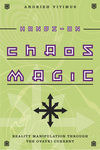Letting Your Subconscious Know What You Really Want

When a magician wants something, they might set out to do a spell to get what they want. This might be a spell for love, prosperity, healing, or any number of other things. The process might involve researching different spell ingredients, chants, the best time to do the spell, which entities or deities with which to consider working, candles, or other supplies. The research might take weeks of preparation. You need to do the spell. You need the love, money, good luck, or healing for yourself or others and you need it now. The day comes, you are ready to do the ritual and you know you need what you are asking for. You really need the spell to work. When you do this magic, from what mental state are you doing the spell? The greater the need, the more desperate you are and the more you want something, the stronger the compulsion to get the results. That feeling of need is almost tangible and the conscious mind feels the pain of want constantly.
The subconscious mind certainly understands need and want. What the subconscious mind does not understand is that you don't want that need, that tangible sense of lack. It will graciously give you more of what it thinks you want, which is basically the sense of need. This seems horribly counterproductive to the conscious mind, but the subconscious mind is only trying to give you more of what it understands that you want based on what you keep asking for with your conscious thoughts and emotions. The subconscious mind is your direct conduit to the spiritual realms, magical power, and the fulfillment of your desires, but as Elman would say, it seems to have the attention span and reasoning ability of a four-year-old. It will take many of the instructions that we give to it quite literally (Elman, 1964). If you ask the subconscious mind for that tangible want, it produces more want without judgment. When we are doing spells, often those conditioned and conscious thoughts and emotions get in the way of our magic. The subconscious mind gets confused and does not know whether we want the intention of our spell work or the more feelings of want and need.
I am sure each one of us who practices magic has had a situation where they wanted something so badly, did a spell, obsessed over that want, and did not get the desired results. In my book, Hands-On Chaos Magic, I combine the methods of hypnosis, psychic development, energy work, and trance generation to help readers get around the conscious mind so they can program their subconscious mind to manifest exactly what they want. While researching multiple magical systems and doing extensive research in cognitive science, along with years of practical experience, I came to the same conclusion that many magicians have: effective results-orientated magic involves going deep enough into a trance state to effectively shut down the conscious mind. In my personal Hypnoenergerics seminars, which combine the best energy healing and manipulation techniques and the most effective hypnosis techniques, stunning results are produced when the subconscious mind is giving a singular focus with clear, easy to understand instructions.
Let's work through a very simple candle spell to attract a new lover, as adapted from Raymond Buckland's Practical Candleburning Rituals (Buckland, 1993). Let us take two red candles for passionate love. Perhaps you oil the candle with some love-drawing oil, taking care to oil the candle from the center of the candle out to each end. Since this is a new lover (not someone you know), you understand and call one red candle your new lover's heart. You call the other candle your heart. You place two white candles on each corner farthest from you. You even light a gold candle in the center while burning some incense that specifically smells great to you. Each day you move the red candles slightly a bit in, representing that your new lover is coming to you. Now, what happens when you do a ritual like this? For many people, they start to think about how great their lover will be. Perhaps they have a set of physical characteristics. Maybe the thought crosses their mind about how long it has been since they have been sexually intimate, and how much they want that warmth and companionship. Perhaps they have doubts whether or not they deserve the new lover. Most people can have all of these thoughts within the span of one minute. In some cases the thought that may dominate is that magic is not real.
In this example, there are a lot of things for the subconscious mind to pick up on. If the subconscious mind is the conduit for our request to the universe, what are we asking the universe for? The subconscious mind can't understand, since it has the ability of a four-year-old and takes everything quite literally, so in this case it does nothing. In the case where a critical voice dominates, the subconscious mind may actually work against the conscious wishes of the person believing that that is what they want. Instead of doing the ritual in that fashion, let's try to do something different. Using all five of your senses, write down and describe what love means to you. It's ok to go back to your memories and search through all the times you can remember being in love. If you cannot remember any specific times, imagine what it would be like to be in love, and imagine a second or third time that this happens. Write down all the details. Try to get away from general words and instead focus on senses. For example, that might be how your stomach feels when you are around someone you love or what you perceive to be the sensation of walking on Cloud Nine. On a second set of paper, write down those things that seem to pop up in multiple experiences that do not specifically deal with one particular person. What happens when you think hard about everything on this second list? What happens if you make the items on the list more vibrant and colorful, the feelings more intense, perhaps the sounds clearer? Most people may notice that their body and mind start to wander into all the thoughts they consider love. These techniques are from neuro-linguistic programming and hypnosis (Andreas, et al., 1994). Try doing the above simple ritual, focusing on all the things on the second list you wrote down. In fact, try to memorize the list of sensations and then do the ritual.
Allow yourself to completely relax and with your mind's eye fully see, feel, hear, smell, and taste all of the things on your second list. As you keep going through that list and relax, you might in fact notice that doing the ritual is physically a bit harder to do because you are so drawn into the sensations that it takes more effort to move the candles and speak the words over the candles. This is a great sign that you are in a deep enough trance state that your conscious mind mostly shuts down. The critic, the voice of reason, and even the desperation are trumped by these great and positive feelings. At times, when I have done a ritual like this, I go so far into the sensations, that I lose the ability to speak. In this case, what is the message to your subconscious mind that will act as the conduit to the universe?
Although you are not saying the word love, you are going through all of the sensations your subconscious knows as love. As you are working with the candles, intensifying the sensations and moving the candles together slowly, the message is clear: I want this sensation to come to me. Of course, the magician still has to do the physical things in the world to obtain the desired result. Casting a love spell and staying inside your home is not a giving the magic fair chance. In this particular spell, you are supposed to light the candles each day (stopping after saying the poetic words you wrote about the ritual). Imagine how great you would feel if you concentrated on those sensations for thirty minutes a day while slowly moving the candles together. Not only would your subconscious mind understand what you want, but you would also have the added benefit of feeling better and better. Most importantly, you will be doing the magic from the point of what you do want, and that will increase your results significantly.
Works Cited:
Andreas, S., Faulkner, C., Gerling, K., Hallbom, T., McDonald, R., Schmidt, G., et al. (1994). NLP: The New Technology of Achievement. New York: Quill.
Buckland, R. (1993). Practical Candleburning Rituals. St. Paul: Llewellyn Publications
Elman, D. (1964). Hypnotherapy. Glendale, CA, USA: Westwood Publishing Co.

About Andrieh Vitimus
Related Products



is subject to certain Terms and Conditions